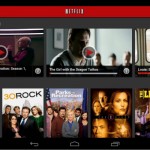Why Publisher Condé Nast Invests In Jewelry Start-up RenéSim?
Giant publisher Condé Nast is showing disruptive DNA by investing in Europe’s jewelry e-commerce start-up RenéSim. What other media powerhouses are shifting their business models away from advertising?

Is this deal a coincident or a much bigger trend?
Read along to see more stunning insights.
Media for Equity at B2C Start-ups?

Smart media owners across Europe have noticed this trend. That it might be smart to take a 30-50% stake in a B2C start-up, in exchange for media pressure and GRPs.
For the media owners this means not only spread, it also makes them less depending on short term advertising and can create long term value in terms of extra revenues and profit. Certainly when the start-up makes an exit.
B2C start-ups mostly are expensive, because they need a lot of media power to scale and to get into the consumers evoked set.
And wallet.
Publisher Conde Nast in Jewelry?

That might be the reason why Condé Nast Germany has invested in RenéSim, one of Europe’s first online jewelers in the luxury segment.
The publisher, known for titles like Vogue magazine, told that it owned shares since 2011, but has now raised its stake in RenéSim to 46%.
Maximilian Hemmerle and Georg Schmidt-Sailer, the founders and Managing Directors of RenéSim said:
“Condé Nast’s exclusive media brands give us valuable access to our hard to approach, discerning target group. In addition, with its worldwide presence and global brands, Condé Nast is the ideal partner for the continued internationalization of our business model.”
Since Condé Nast’s investment in 2011, RenéSim says its sales volume has quadrupled. In addition, the business of RenéSim expanded to France and the UK in 2012.
Should we be surprised about the quadrupling of sales? Not really. Vogue’s target audience must have an appetite for luxury jewelry.
Should we be surprised it’s Condé Nast again? Not really.
Although these are online publishing related companies, Condé Nast had already invested in Reddit and in cloud based ad tech firm Flite.
Other investments by Conde Nast are: Rent the Runway, a disruptive eCommerce business with a mission to democratize luxury in the U.S.
Another investment is TasteBook, a company that allows users to create and order custom hardback cookbooks.
Acquisition was ZipList, a free shopping list management tool that allows you to create and share grocery lists with family members.
My Opinion?
I have seen many media owners being happily married with B2C start-ups.
Am I surprised that RenéSim claims to have quadrupled its revenues since the partnership with Conde Nast? Not at all. Not strange for print.
I have seen B2C start-ups scaling their sales 8-12 times when they partnered with a large TV broadcaster. So yes, GRPs can work for B2C start-ups.
So hype or trend? Certainly a trend.
CNN acquired Zite, the news aggregation App for the iPad that gives users a personalized magazine-like experience.
In the Netherlands, leading TV broadcaster RTL, owned by Bertelsmann, has successfully partnered with several start-ups and has launched a few smart joint ventures.
I expect that more media owners will start or use their venture division to find more disruptive B2C start-ups.
They should, because media owners tend to know much more about their targets audiences than i.e. large advertizers.
Next, media owners should not want to be fully depending on advertising alone. That is a too weak business model, if your company is not called Google.
TV spend will be going down the next coming years, it is a trend. TV will become medium number 2 in terms of ad spend.
Digital will be leading or is already the number one in several markets.
Certainly for media owners that see their fill rate and GRP – CPM prices going down, disruptive thinking might be the salvation most have been looking for.
Who ever said media companies should stick to advertising 100% anyway? Maybe the “old media” testament books?
Breaking with the status qua, many disruptive start-ups are doing it.
And so can smart media owners.
What About You?
How do you feel about the Conde Nast approach? What do you expect form media owners and start-ups? I’d love to see your opinion in the comments below.
Follow & Share
Want more social insights? Browse our category Social Media, follow Igor Beuker on Twitter, grab our RSS Feed, join our Facebook movement or subscribe to our weekly e-mail newsletter.
About the Author
Igor Beuker was CMO at 3 listed companies, chairmain at the IAB, jury member at Webby, AMMA and Esprix awards, founder of 2 agencies (both sold to WPP) and global chief social officer at Mindshare. Now he is ‘freejack’ consultant and still a sought after keynote speaker.
Source: TechCrunch.
Related Stories
Follow Category?Start-up Stories |
Follow Author?Igor Beuker |
15 more
Follow Tags?advertisingbusiness modelscnnconde nast |













